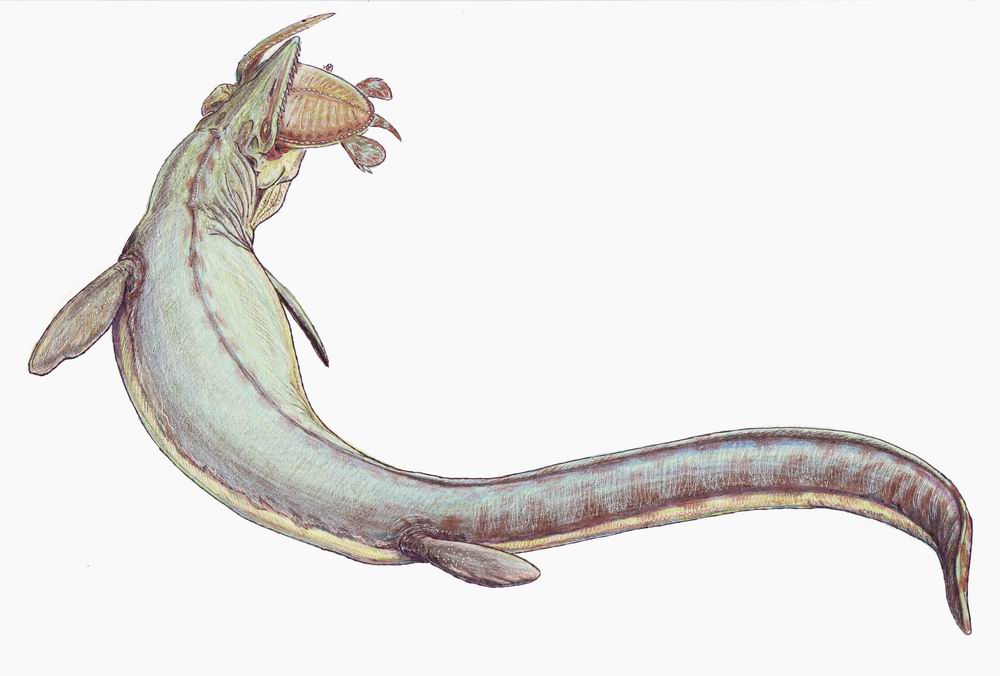at the end of the Cretaceous period, about 66 million years ago.

Mosasaurs breathed air, were powerful swimmers, and were well-adapted to living in the warm, shallow inland seas prevalent during the Late Cretaceous period. Mosasaurs were so well adapted to this environment that they gave birth to live young, rather than returning to the shore to lay eggs as sea turtles do.
The smallest-known mosasaur was Dallasaurus turneri, which was less than 1 m (3.3 ft) long. Larger mosasaurs were more typical, with many species growing longer than 4 m (13 ft). Mosasaurus hoffmannii, the largest known species, may have reached up to 17 m (56 ft) in length. Currently, the largest publicly exhibited mosasaur skeleton in the world is on display at the Canadian Fossil Discovery Centre in Morden, Manitoba. The specimen, nicknamed "Bruce", is just over 13 m (43 ft) long.
Mosasaurs had a body shape similar to those of modern-day monitor lizards (varanids), but were more elongated and streamlined for swimming. Their limb bones were reduced in length and their paddles were formed by webbing between their long finger and toe bones. Their tails were broad, and supplied their locomotive power. Until recently, mosasaurs were assumed to have swum in a method similar to the one used today by conger eels and sea snakes, undulating their entire bodies from side to side. However, new evidence suggests that many advanced mosasaurs had large, crescent-shaped flukes on the ends of their tails, similar to those of sharks and some ichthyosaurs. Rather than use snake-like undulations, their bodies probably remained stiff to reduce drag through the water, while their tails provided strong propulsion. These animals may have lurked and pounced rapidly and powerfully on passing prey, rather than chasing after it.
Early reconstructions showed mosasaurs with dorsal crests running the length of their bodies, which were based on misidentified remains of tracheal cartilage. By the time this error was discovered, depicting mosasaurs with such crests in artwork had already become a trend.
from Wikipedia